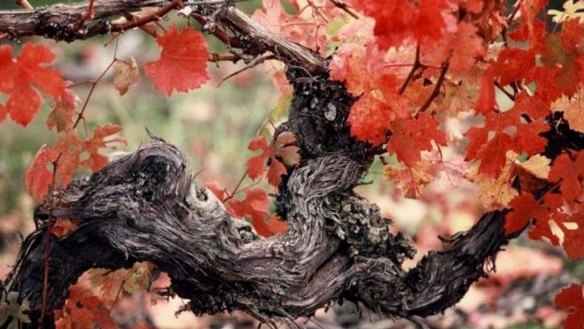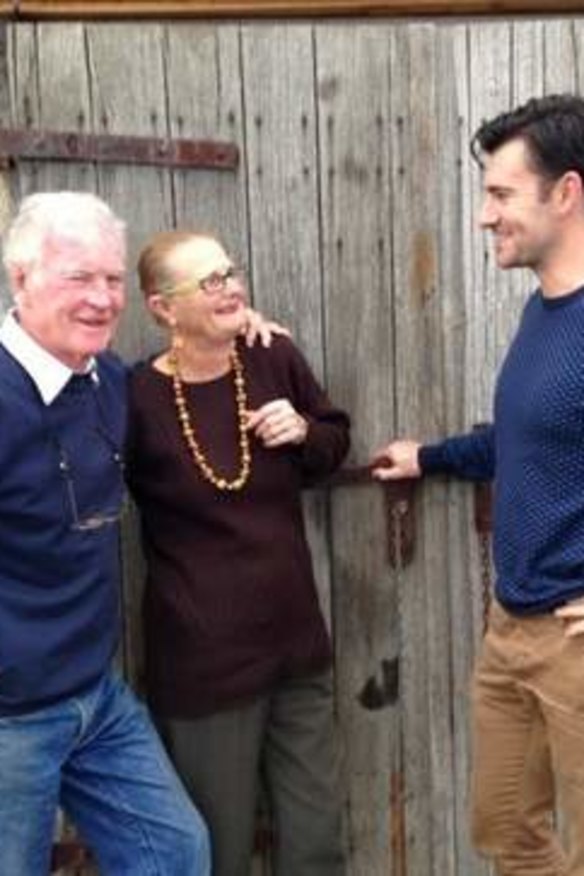Changing face of the Grampians
Two wine producers - one with 53 vintages behind him, the other with just nine - look to the next century.

Eric Vivian ''Viv'' Thomson is a fourth-generation wine man in a country where such things are so rare as to be celebrated.
The endearing - not to mention enduring - face of Best's Wines at Great Western, he has contributed 53 years and vintages to the Grampian region's 150 being celebrated this year.
Rory Lane is the first of his family to enter winemaking. His contribution to those 150 years is nine vintages. He owns no vineyards, no winery, but sources fruit from growers for his label, The Story. He lives in Melbourne.

Both men, who met for the first time for this interview, represent the changing face of the Grampians, the old guard and the new.
They share much in common … well, almost. There's the subject of riesling, a mainstay at Best's.
Thomson: ''I reckon we grow pretty good riesling here.''
Lane: ''I've had access to riesling (from the Grampians) but turned it down. I think you'd be better off growing riesling further south, near Drumborg and Crawford River.'' After tasting the 2012 and as-yet-unreleased and super-delicate 2013 riesling from Best's, Lane admits to a ''turnaround''. Grampians riesling is a lot friendlier earlier in its life than Henty, a little touch of residual sugar often seeing to that. Recently, Seppelt returned to producing a Great Western-based riesling, starting with the 2012 vintage, so maybe the style, in an off-dryish kind of way, is gaining renewed traction.
There's also the subject of sparkling wine. Many consider Great Western the birthplace of the Australian sparkling-wine industry.
Thomson: ''Seppelt for a long time produced without doubt the best sparkling wine in this country. And then the marketers got hold of it.''
Lane: ''It is no doubt a still (non-sparkling)-wine region.''
History shows that while Thomson is historically accurate - the Seppelt bubbly heyday lasting well into the 1980s - Lane is closer to reality as the wine region enters a new century. The sourcing of super-cool-climate chardonnay and pinot noir for sparklings has now moved to other areas, notably Tasmania, but there is one sparkling that will forever be associated with the Grampians name: sparkling shiraz.
In 2006, Best's brought back the style after a 40-year hiatus. Clearly, the Thomsons believe it still resonates. Rory Lane likes the style, he just doesn't know what to do with it. ''Sparkling shiraz is a tough one,'' he says. ''I don't tend to drink it because I don't know where to fit it into the meal but I do love the old Seppelts.'' Lane is not the only one perplexed by the sight of a rich shiraz with bubbles. It seems you either get it or you don't. It's the Australian wine equivalent of Vegemite and can often be just as meaty.
The Grampians is a relatively recent name, a creation of the geographical indications process conducted throughout the 1990s to define Australia's wine regions and their borders. It covers the towns of Halls Gap, Stawell, Great Western and Ararat. In the 1890s the region was home to 112 vignerons; today just 44. One reason for the decline? It's expensive to grow grapes around these parts.
Apart from sparkling wine, its most enduring contribution to Australian wine is the shiraz grape. In the 1990s under Trevor Mast, Mount Langi Ghiran was hailed as the mastermind of the alternative Aussie shiraz, the creator of an antidote to big, bold warm-climate shiraz. Langi Ghiran in Djab Wurrung translates to ''home of the black cockatoo''; Langi Ghiran shiraz translates to ''home of the black pepper''.
How do our two winemakers view the regional shiraz style?
Thomson: ''Grampians shiraz is more elegant, you can't over-extract wines here. You can't make big, heavy wines. Different vineyards bring out either more black or red fruits, more pepper or spice.''
Lane: ''I found the majority of Australian shiraz not to my taste - so much ripeness, so much sweetness - that's why I came here.''
Both Best's and The Story believe strongly in a structured shiraz providing a frame for the region's plush fruit.
If shiraz is the enduring constant in the 150 years of Grampians history, what will lead it into the future?
The availability of water remains a problem. Lane wouldn't mind looking to later-ripening grapes that might suit the drier, changing climate. He likes the idea of grenache and mataro in addition to shiraz. He's already having some success with his Story marsanne, roussanne and viognier blend.
Thomson: ''One hundred and fifty years and we're still here, we're not going anywhere. The key is quality. Whatever we do, it has to be about quality.''
150 years of excellence
1863 Jean Pierre Trouette, Marie Blampied and her brother, Emile, plant vines near the Concongella Creek at Great Western.
1866 Joseph Best plants vines (''Great Western'' vineyard). His brother Henry plants further down the Concongella Creek (''Concongella'' vineyard).
1870 The Ararat Advertiser reports ''two lofty stories sunk beneath the surface'' at Great Western Cellar, comprising four tunnels or ''drives'' measuring ''seven feet by four feet and re-crossed by other drives'' for sparkling wine.
1888 Great Western Vineyards and Cellar is bought by Ballarat businessman Hans Irvine. He engages former Pommery maker Charles Pierlot to make a Great Western ''champagne''.
1918 Irvine sells Great Western Vineyards to a friend, Benno Seppelt, of Seppeltsfield.
1920 Concongella Great Western Vineyards is bought by Frederick Thomson. He retains the name Best's Great Western.
1932 Colin Preece becomes manager at Great Western Vineyards and pursues huge vineyard and winery expansion from 1941-61 to keep up with demand, especially for sparkling wines.
1953-55 Preece introduces four wines cementing his reputation as one of Australia's greatest makers: Moyston Claret, Chalambar Burgundy, Arawatta Riesling and Rhymney Chablis.
1960 Viv Thomson joins the family business at Best's.
1971 The Fratin brothers establish Mount Langi Ghiran.
1987 Trevor Mast buys Mount Langi Ghiran. Seppelt winemakers buy historic St Ethel's vineyard and establish Garden Gully Vineyards.
2012 Best's Bin 1 2011 shiraz wins the Jimmy Watson Trophy for best young red wine at the Melbourne Wine Show.